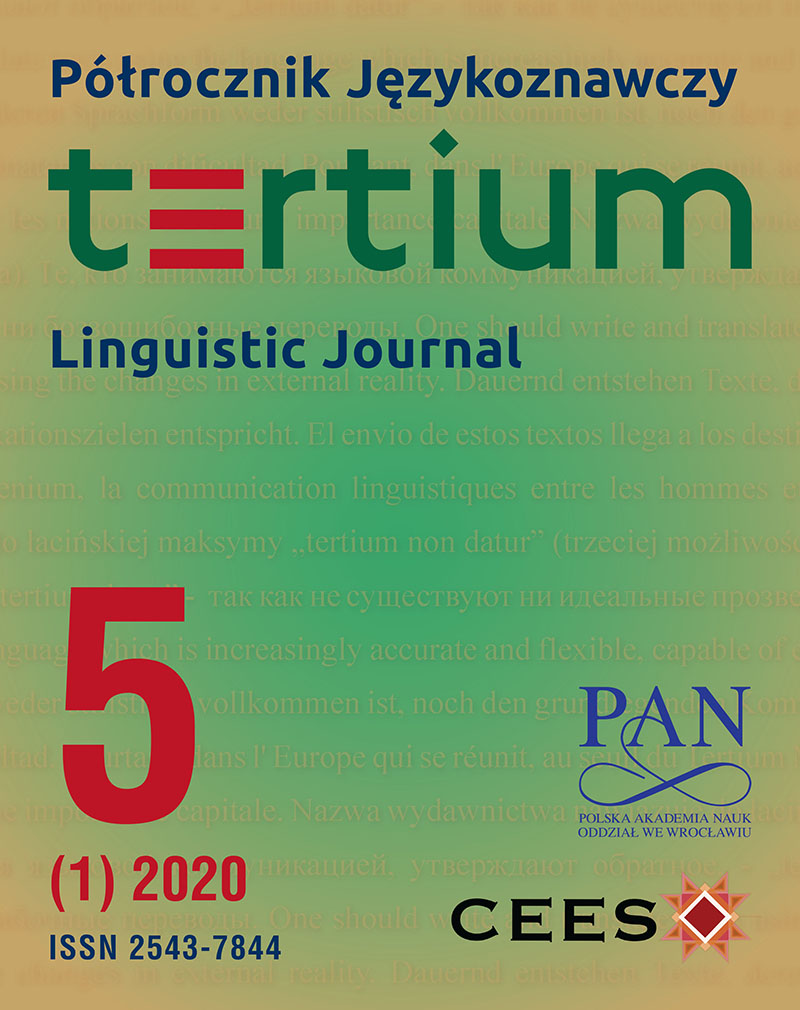Tłumaczenie teatralne w polskim języku migowym
Theatrical Interpreting in Polish Sign Language
Author(s): Magda Schromová, Aleksandra Kalata-ZawłockaSubject(s): Foreign languages learning, Translation Studies, Drama
Published by: Krakowskie Towarzystwo Popularyzowania Wiedzy o Komunikacji Językowej Tertium
Keywords: the deaf; Polish Sign Language; interpreter; theatrical interpreting
Summary/Abstract: W artykule bliżej przedstawiono temat tłumaczenia teatralnego, które w ostatnich latach podlega dynamicznemu rozwojowi. Tłumaczenie teatralne to rodzaj tłumaczenia artystycznego, które umożliwia społeczności Głuchych uczestniczenie w otaczającej ich kulturze słyszących. Artykuł szczegółowo omawia kilka rodzajów tłumaczenia teatralnego: pozycyjne, strefowe, cieniowe oraz eksperymentalne. Główna uwaga poświęcona jest tłumaczeniu cieniowemu – specjalnemu rodzajowi symultanicznego tłumaczenia języka fonicznego na język migowy, wykonywanemu w taki sposób, że każdemu aktorowi na scenie towarzyszy jeden tłumacz. Podczas tłumaczenia cieniowego tłumacze są w pełni włączeni w występ, poruszają się razem z aktorami – są ich cieniami. Tłumaczenie cieniowe jest dla osób Głuchych bardzo komfortowe, widzowie mogą się skupić na grze aktorów bez konieczności odrywania wzroku od artystów. W Polsce pierwsze próby zastosowania tej formy tłumaczenia podjęto dopiero w 2015 roku. Artykuł porusza również temat przygotowania do tłumaczenia, trudności związanych z każdym z opisanych rodzajów tłumaczenia oraz specyficzną rolą tłumacza.The article explores the topic of theatrical interpreting, a type of interpreting that has been developing dynamically for the last few years, enabling Deaf people to participate in the surrounding culture of the hearing society. The article discusses in detail a few forms of theatrical interpreting, such as position interpreting, zone interpreting, shadow interpreting and experimental interpreting. The main attention in the article is given to shadow interpreting, a special form of simultaneous interpreting from spoken language to sign language, whereby each actor on stage is accompanied by one interpreter. During the play, sign language interpreters are an integral part of the performance – they follow the actors and become their shadows. This form of interpreting is very comfortable for Deaf viewers as they can fully concentrate on the actors’ performance without the necessity to split their attention between the artists and the sign language interpreting. The first attempts to apply this form of interpreting in Poland were made only in 2015. The article deals also with the topics of preparation for interpreting, challenges connected with each type of the interpreting described in the article as well as the specific role of an interpreter.
Journal: Półrocznik Językoznawczy Tertium
- Issue Year: 5/2020
- Issue No: 1
- Page Range: 54-76
- Page Count: 23
- Language: Polish

